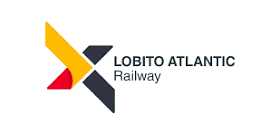 Namibia’s Ports: A Rising Force in Southern Africa’s Logistics Landscape
Namibia’s Ports: A Rising Force in Southern Africa’s Logistics Landscape
Namibia’s port infrastructure is rapidly emerging as a key player in Southern Africa’s logistics and trade network, offering significant opportunities for African travel and logistics professionals. With its strategic location and ongoing developments, Namibia is positioning itself as a competitive alternative to regional giants like Durban and Dar es Salaam, while also complementing ambitious rail projects like the Trans-Kalahari and Trans-Zambezi corridors.
The country’s flagship port, Walvis Bay, stands out with an annual container capacity of 750,000 TEUs and a maximum depth of 14.5 meters. This makes it one of the most efficient and modern ports in the region, capable of accommodating larger vessels and handling diverse cargo. Meanwhile, the smaller Lüderitz Port, with a capacity of 150,000 TEUs and a depth of 8.75 meters, serves as a vital gateway for mining exports and regional trade. These ports are strategically located to serve landlocked neighbors like Botswana, Zambia, and Zimbabwe, offering them access to global markets via the Atlantic Ocean.
Namibia’s ports are not only competing with regional heavyweights like Durban (2.9 million TEUs capacity) and Dar es Salaam (1.1 million TEUs capacity) but are also carving a niche by focusing on efficiency, reduced congestion, and shorter transit times. The country’s emphasis on sustainability and streamlined operations is attracting attention from logistics professionals seeking alternatives to the often-overburdened ports in South Africa and Tanzania.
Rail Connectivity: A Game-Changer for Regional Trade
Namibia’s port developments are closely tied to its ambitious rail projects, which aim to enhance regional connectivity and trade. The Trans-Kalahari Railway, set to link Walvis Bay with Botswana’s coal-rich Mmamabula region, is expected to commence construction in early 2025. This project will provide a direct route for bulk exports, reducing transportation costs and opening up new markets for Southern African commodities.
Similarly, the Trans-Zambezi Railway aims to connect northern Namibia to Zambia and the Democratic Republic of Congo, facilitating the export of minerals and agricultural products. These rail corridors will not only boost the efficiency of Namibia’s ports but also position the country as a critical hub for regional trade under the African Continental Free Trade Area (AfCFTA).
Implications for African Travel and Logistics Professionals
For African travel and logistics professionals, Namibia’s port and rail developments present a wealth of opportunities. The improved infrastructure will enable faster and more cost-effective movement of goods, benefiting industries ranging from mining to agriculture. Logistics companies can leverage Namibia’s strategic location to offer integrated solutions that combine sea, rail, and road transport, creating seamless supply chains for clients across the region.
Travel professionals, on the other hand, can tap into the growing demand for business travel and tourism linked to Namibia’s infrastructure projects. The ports and railways are expected to attract international investors, engineers, and workers, driving demand for accommodation, transport, and other travel-related services. Additionally, the enhanced connectivity will make Namibia more accessible to tourists, boosting its appeal as a destination for eco-tourism and adventure travel.
Regional Competition and Collaboration
Namibia’s ports are part of a broader competitive landscape that includes the Lobito Corridor in Angola and the TAZARA Corridor linking Tanzania and Zambia. The Lobito Corridor, backed by \$6 billion in international funding, is set to become a major route for mineral exports from the Democratic Republic of Congo and Zambia. Meanwhile, the TAZARA Corridor is undergoing upgrades to improve its capacity and efficiency, further enhancing its role as a key trade route in East Africa.
While these corridors present competition, they also offer opportunities for collaboration. Namibia’s ports could serve as complementary gateways, providing alternative routes for landlocked countries and reducing dependency on a single corridor. This collaborative approach aligns with the African Union’s Agenda 2063, which envisions a continent-wide network of integrated infrastructure to drive economic growth and development.
Looking Ahead
As Namibia continues to invest in its ports and railways, the country is poised to become a vital link in Southern Africa’s logistics network. For African travel and logistics professionals, this presents a unique opportunity to capitalize on the region’s growing connectivity and trade potential. By staying ahead of these developments, industry stakeholders can position themselves to benefit from Namibia’s rise as a logistics powerhouse.
